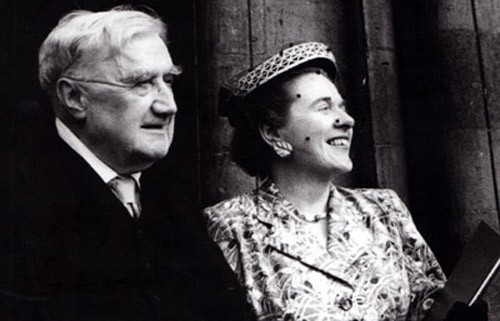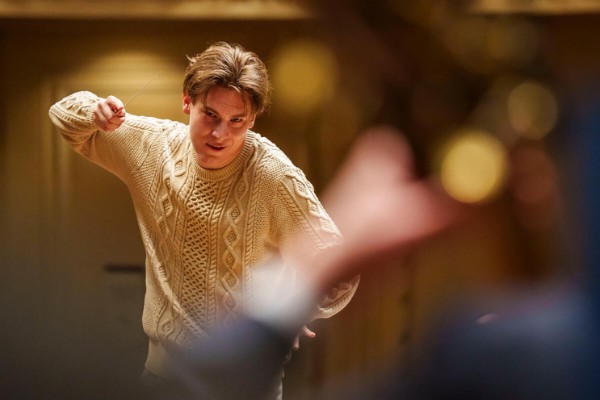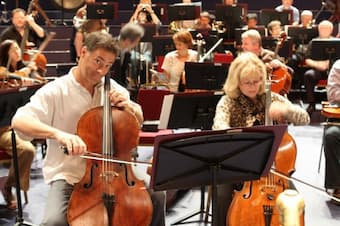
Tony and Janet
If you love classical music and attend symphony concerts you are aware certain musicians have titles and special responsibilities. The concertmaster does not simply get a bow at the beginning of a concert and a handshake at the end. He or she is the leader and main representative of the orchestra and is the conduit between the conductor and the musicians. The concertmaster may have meetings with the artistic management and conductor, and consults on matters ranging from the bowings, the unity of style, and the interpretation of the music, as well as issues of personnel, tenure, and auditions. The concertmaster decides the bowings and then shares them with the other principal string players in order to make sure they are coordinated.
Most notably from the audience standpoint, the concertmaster plays the solos written within the repertoire, and there are lots of them, to name a few, the famous solo in Scheherazade by Rimsky-Korsakov or the solo in Strauss Ein Heldenleben, or Mahler’s Symphony No. 4 in the 2nd movement where the violin has to be tuned differently. He or she will also be featured as the soloist on a program at least once a season.
Nikolai Rimsky-Korsakov: Scheherazade, Op. 35 – I. The Sea and Sinbad’s Ship (Erich Gruenberg, violin; London Symphony Orchestra; Leopold Stokowski, cond.)
Gustav Mahler: Symphony No. 4 in G Major – II. In gemächlicher Bewegung, ohne Hast (Dresden Staatskapelle; Giuseppe Sinopoli, cond.)
I’ve had the privilege of sitting with three excellent cellists, my stand-partners in the Minnesota Orchestra during my 34 years as an orchestral player, and with other esteemed cellists during summer festivals. The principal cello works closely with the concertmaster and other principals and likewise prepares the bowings. The principal cello will also often have solos like in Elgar’s Enigma Variations, and longer solos such as the striking solos in Brahms’ Piano Concerto No. 2 and the exquisite solo in Richard Strauss’ Le Bourgeois Gentilhomme Suite Op. 60.
(Don’t be fooled by the dinner music and the bleating sheep that precedes it!)
Richard Strauss: Le Bourgeois Gentilhomme (Der Bürger als Edelmann) Suite, Op. 60, TrV 228c – IX. Das Diner: Tafelmusik (London Philharmonic Orchestra; Klaus Tennstedt, cond.)
So why, you will ask, do I cite the associate principal position as the “hot” seat?
Ever had the dream that you show up to the concert and you’re the soloist? That’s happened to me on a few occasions. The associate principal player, as the number two player, is assigned the weeks where he or she will be the principal ahead of time. This would occur when the principal is either featured as soloist, or is enjoying a vacation, or sometimes if he or she has permission to perform or teach elsewhere.
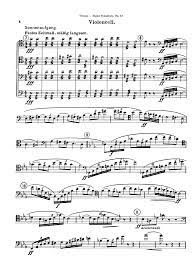
The divisi parts in Alpine Symphony
Obviously, the associate is responsible for preparing the music really well, as someone who is right under the nose of the conductor, and to assist in leading the section as one of the two people on the first stand. Now, this is where it can get scalding. The associate should practice all of the cello solos in the repertoire but never gets the chance to rehearse them. It’s tempting to give these solos a mere cursory look. I wouldn’t advise that approach.
When the orchestra was performing the massive Alpine Symphony of Richard Strauss, a tone poem for large orchestra, I arrived at the hall quite early. Nervously I glanced at my watch every few seconds. We needed all our forces and Anthony Ross, the principal had not yet arrived. Grabbing my cello, I raced onto the stage a bit disheveled. I’m rarely disheveled. I leafed through the part in a panic looking for the solos with little time to go over a few spots. Did I mention there are about a zillion notes in this piece? Curtain. Tony had not arrived. All the cellists, including me, shuffled up, taking a seat one closer than they usually occupy, which means most of us were playing from parts we weren’t accustomed to.
Richard Strauss: Alpine Symphony
The opening begins mysteriously but my pounding heart beats I’m sure, disrupted the slow rhythm. The orchestration of this piece is colossal with 8 horns, 12 offstage horns, two sets of timpani, an organ, two harps, a wind machine, and metal panes to shake in fury to depict a thunderstorm. And, if this isn’t enough, many of the string parts are marked ‘divisi’ meaning divided, where the inside player of each stand plays one line while the outside of the cellos plays a different line. In this piece, there are spots with more lines, each different, for a thicker texture overall. It’s also a 50-minute continuous piece—no breaks for any stragglers or latecomers. But in any case: how would a principal cello “sneak” onstage?
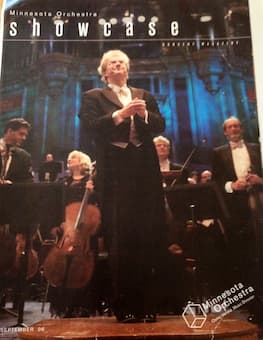
© Minnesota Orchestra
Somehow with more than the usual amount of adrenaline, less blinking, (and did I say I forgot to swallow?) I played a few solos (drowned out by the brass section) and the section stayed together through this challenging piece.
Even when Tony was present I could be thrust into the hot seat. Tony broke a string more often than most. My responsibility normally would be to switch cellos with him to allow Tony to continue playing while I ran off the stage to change the offending broken string. Imagine clutching his irreplaceable cello while dogging all the other cellists, their bows, the stands, chairs, risers, and the double bass section. It wasn’t a pretty sight!
The dramatic and familiar twang of a ruptured string happened so often that Tony decided in future he would change the string himself onstage. He’d flip the cello around, whip a packet out of his tailcoat containing a fresh string, and more quickly than you can imagine, he’d wind the string up to pitch, always drawing a great deal of audience incredulity. Meanwhile, the conductor would eye me, wondering when all the commotion would end. I’d try to keep my cool and my place in the music.
Variation 11 from Elgar’s Enigma Variations is a presto movement and ends with quite a flurry. Sure enough, Tony popped a string. I knew that the cello solo, opening variation 12, was seconds away. I gulped and readied myself with a sideways glance to see if Tony would be ready with the new string in time to play it. He wasn’t. I took a deep breath and with as much poise as I could muster I played the contemplative phrase. The solo returns at the end of the variation in hushed tones. Tony was ready but he had me play it.
Edward Elgar: Variations on an Original Theme, Op. 36, “Enigma” – Variation 11: G. R. S. (George Robertson Sinclair) (Philharmonia Orchestra; John Barbirolli, cond.)
Edward Elgar: Variations on an Original Theme, Op. 36, “Enigma” – Variation 12: B. G. N. (Basil G. Nevinson) (Philharmonia Orchestra; John Barbirolli, cond.)
Edward Elgar: Variations on an Original Theme, Op. 36, “Enigma” – Variation 13: Romanza: *** (Lady Mary Lygon) (Philharmonia Orchestra; John Barbirolli, cond.)
That night the conductor gave not only the principal cello a bow but me too, the associate, and I received an extra firm handshake from the conductor.
For more of the best in classical music, sign up to our E-Newsletter

